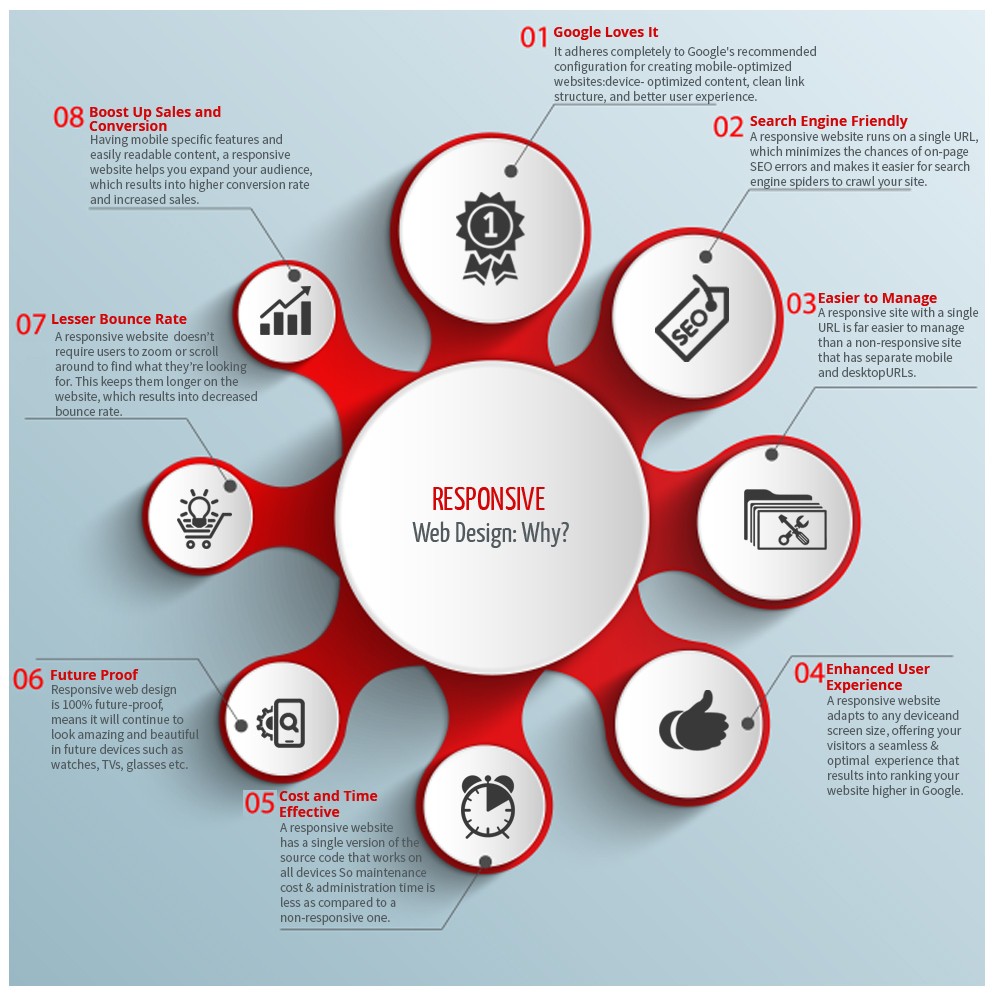Master the art of web design by concentrating on user experience. Craft intuitive navigation and choose mobile optimization to enhance the searching experience. Make certain very easy navigating with clear headings and appealing visuals. Prioritize mobile responsiveness for a consistent user experience. By incorporating these important layout principles, you can produce an easy to use website that mesmerizes site visitors.
Necessary Style Concepts
When developing a site, focus on customer experience most importantly else. Your major objective must be to produce a seamless and pleasurable experience for your site visitors. Begin by making sure that your web site is simple to navigate. Usage clear headings, organized food selections, and user-friendly buttons to guide customers with your material easily. Keep in mind, simplicity is vital. Prevent jumbling your web pages with unnecessary elements that can overwhelm or confuse your audience.
One more necessary layout principle is to make certain your web site is visually attractive. Pick a cohesive color design, top notch photos, and understandable font styles to boost the general appearance of your website. Consistency is vital in developing a solid brand identity and making your website a lot more remarkable to customers.
In addition, prioritize mobile responsiveness. With even more people browsing the web on their smart devices and tablet computers, it's necessary that your site looks and operates well on all gadgets. Check your website on different display dimensions to ensure a seamless experience for all users. By focusing on these crucial style principles, you can produce a straightforward website that maintains visitors coming back for even more.
User-Focused Navigating
To boost user involvement and enhance their surfing experience, prioritize developing user-friendly navigating pathways that guide site visitors effortlessly through your website. Clear and efficient navigation is vital for helping individuals find the info they need promptly and efficiently. Begin by keeping your menu structure easy and easy to understand. Use descriptive tags that plainly indicate what content can be found under each menu choice. In addition, consider carrying out dropdown menus for subcategories to prevent overcrowding the major navigating bar.
An additional key aspect of user-focused navigation is making use of breadcrumbs. Breadcrumbs are an additional navigation help that reveals users their existing place on the internet site and enables them to conveniently browse back to previous pages. This function is especially valuable for users who enter your site with a deep link or a search engine outcome.
Furthermore, including search capability plainly on your web site can even more improve customer navigation. A search bar permits customers to rapidly locate certain web content without needing to click with several web pages. Make certain that your search bar is quickly visible and accessible on every web page of your site for maximum use. By prioritizing user-focused navigating strategies, you can create a more intuitive and satisfying searching experience for your visitors.
Mobile Optimization Techniques
Consider optimizing your website for mobile phones to make certain a smooth individual experience throughout various display sizes. Mobile optimization is critical in today's digital landscape where a significant part of net browsing happens on smart devices and tablets.
To enhance mobile functionality, start by applying responsive style techniques. This approach enables your site to adjust to numerous display dimensions, keeping performance and aesthetic appeals.
Focus on maximizing packing times for mobile customers. Slow-loading web sites can hinder visitors and impact your search engine rankings. Compress images, decrease HTTP demands, and leverage browser caching to boost loading speed. In addition, prioritize material power structure for mobile displays. Ensure that necessary information is plainly shown, and navigating is instinctive, promoting simple access to key areas.
Utilize touch-friendly aspects such as bigger buttons and structured kinds to assist in communication on mobile phones. Conduct comprehensive testing across different mobile systems to determine and remedy any type of usability concerns.
Final thought
Finally, understanding the art of web design is important for creating an user-friendly website. By incorporating necessary design principles, user-focused navigating, and mobile optimization strategies, you can ensure a smooth and enjoyable experience for your site visitors.
For example, a local bakery saw a 30% rise in online orders after revamping their web site to be a lot more straightforward and mobile-responsive. Bear in mind, a properly designed web site can make all the difference in bring in and maintaining consumers.
